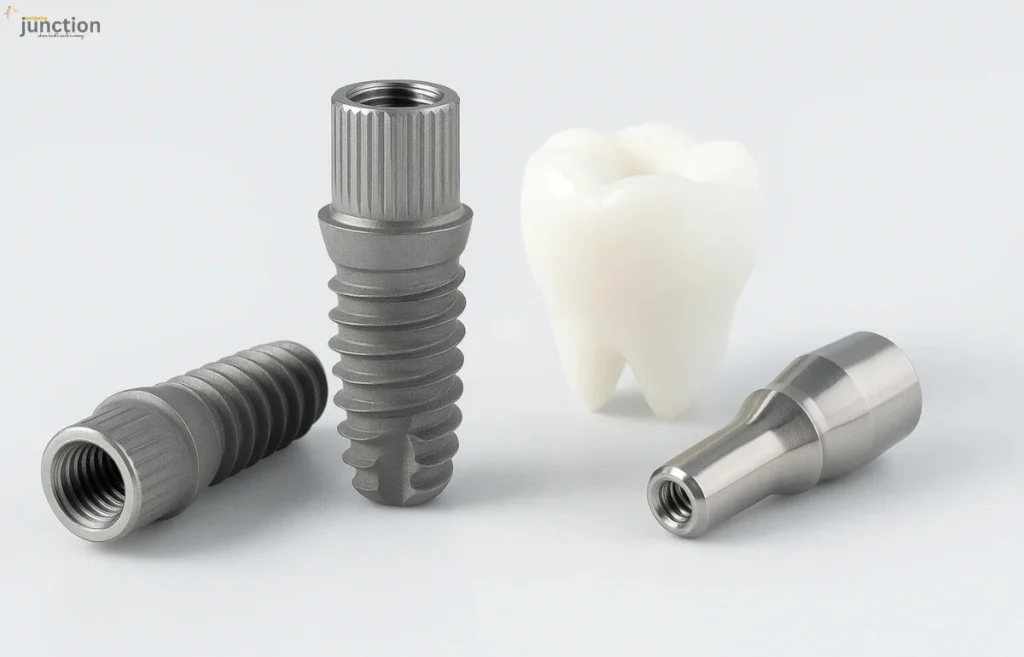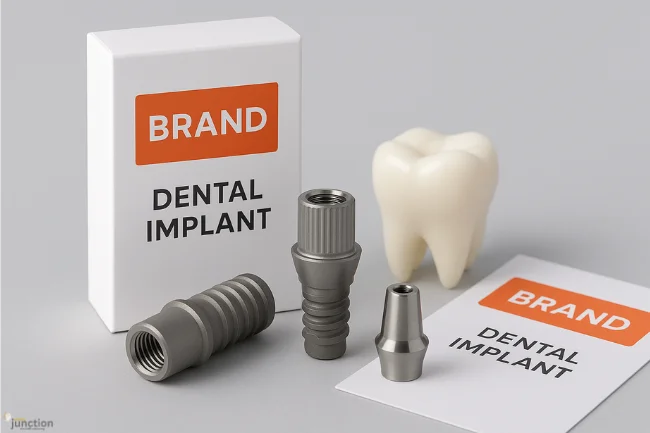Dental practices and laboratories know the pressure of balancing costs with quality. With branded implant systems charging premium prices, many clinics are looking for smarter ways to maintain standards without stretching budgets. That’s where compatible dental components come in.
OEM manufacturing has reshaped the supply chain by offering implants, abutments, and accessories that seamlessly integrate with top-tier systems — for a fraction of the price. For distributors, labs, and clinicians, this shift means more flexibility and stronger margins.
Why Compatible Dental Components Compatibility Matters
In modern implantology, efficiency is just as important as precision. Compatible dental components engineered for internal hex and conical platforms allow labs and clinicians to work across different systems without being tied to one manufacturer.
Compatibility delivers:
- Reduced inventory costs by avoiding system-specific stockpiling.
- More flexibility when managing patient cases across different implant platforms.
- Confidence that components are manufactured with strict tolerances to ensure fit and function.
How OEM Components Keep Costs Down
OEM suppliers operate differently from big brands. Instead of focusing on marketing overhead, they invest in production efficiency and bulk pricing. This allows them to deliver compatible dental components manufactured with Titanium Grade 5, stainless steel, and PEEK at globally recognized standards — but at prices that labs and clinics can actually scale with.
In terms of B2B transactions, this leads to:
- Higher margins on every restoration.
- Predictable lead times and easier planning.
- Room to reinvest savings into new services or equipment.
How Private Labeling Contributes to Growth
For distributors, compatible components are more than just cost-savers — they’re a growth opportunity. With private label services, it’s possible to launch a branded line of implants or abutments, complete with packaging, catalogs, and marketing support. This strengthens brand identity and builds loyalty, turning generic supplies into premium offerings.
Final Takeaway: The Value of Compatible Dental Components
The future of dental supply isn’t about paying more for logos — it’s about sourcing compatible dental components that are engineered to perform, priced for scalability, and flexible enough to fit real-world workflows. For labs, clinics, and distributors, compatible dental components make business sense.
That’s why many are turning to reliable dental implant components compatible with leading systems, a smarter way to save without compromising quality.
FAQs
What types of dental implant systems are compatible with dental components?
They work with a wide range of implant systems, including both internal hex and conical platforms, offering flexibility to clinics and labs.
How can compatible dental components improve patient outcomes?
By providing precise and reliable components that fit seamlessly into various implant systems, they ensure accurate restorations, contributing to enhanced patient treatment outcomes.
Can these components be used for both new and existing patients?
Yes, they can be effectively used for both new and existing patients, ensuring smooth integration into ongoing treatments and implant procedures.
What is the typical lead time for ordering compatible dental components?
Lead times can vary depending on the supplier, but most provide predictable delivery schedules, helping dental practices plan procedures with assurance and simplicity.
Are there any warranty options available for compatible dental components?
Many suppliers offer warranties, ensuring that the parts are reliable and meet high-quality standards for both functionality and durability.
How do I know if a dental component will fit my current implant system?
To ensure proper fit, it’s important to check the specifications provided by the supplier. Many companies offer detailed compatibility charts or technical support to help verify the correct components for your system.
Can I use these components with dental systems from different manufacturers?
Yes, these parts are designed to work seamlessly across different implant systems, offering greater flexibility and reducing the necessity of having a range of product inventories.
What materials are commonly used in dental components?
Common materials include Titanium Grade 5, stainless steel, and PEEK, known for their strength, biocompatibility, and durability in dental applications.
Are there any training resources available for using these parts in practice?
Yes, many suppliers provide educational materials such as webinars, workshops, or product guides to help dental professionals understand how to use these parts effectively in their practice.
Are these components compliant with global quality standards?
Most manufacturers adhere to globally recognized standards, ensuring the parts meet strict regulatory and quality requirements for use in dental procedures worldwide.

I’m Salman Khayam, founder of Wellbeing Junction. I synthesize trusted information from research and expert guidance to create clear articles across health, wellness, and lifestyle topics.
Disclaimer: Content is for informational purposes only and is not medical advice. Consult a qualified expert regarding personal health or specialized questions.



